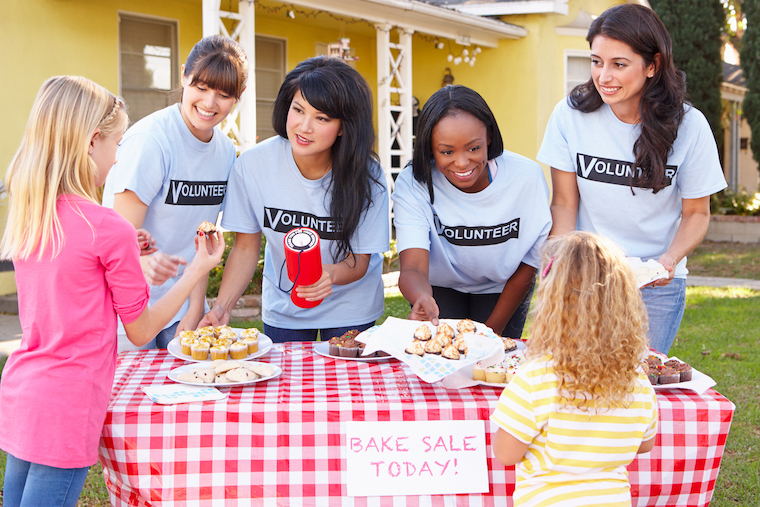Running a cookbook school fundraiser can be an exciting way to engage your community, celebrate local cuisine, and support your educational institution’s goals. By compiling treasured recipes from students, parents, and staff, you create a unique collection that not only raises funds but also builds a sense of unity. The process requires careful planning, from recipe selection to book design and sales strategy, but with the right approach, your cookbook can become a cherished keepsake for your supporters.

To get started, you’ll need to gather recipes, organize a committee, and decide on the format of your cookbook. Each recipe should reflect the diverse tastes and culinary traditions of your school’s community. Meanwhile, the design must be appealing and professional to encourage purchases. It’s also crucial to set a clear financial goal and pricing strategy that covers production costs while providing a profit margin for your fundraising needs. Remember, a successful cookbook fundraiser not only generates revenue but also serves as a delicious snapshot of your community’s shared culinary heritage.
Planning Your Fundraiser

Before you launch your cookbook school fundraiser, setting clear goals and understanding your budget and resources are vital steps for success.
Setting Fundraiser Goals
Start by defining specific objectives for your fundraiser. This could involve:
- Monetary Target: Determine how much money you need to raise. For instance, if your goal is to collect $5,000, this will guide how many cookbooks you need to sell.
- Purpose: Clearly articulate the purpose of your funds. Are you raising money for new school uniforms, updated kitchen equipment, or perhaps a student field trip?
Determining Budget and Resources
To effectively plan your budget and resources, consider the following:
- Initial Capital: Estimate any upfront costs such as printing and materials. For example, if printing each cookbook costs $4 and you plan to sell 500 copies, your printing expenses will reach $2,000.
- Available Resources: Take stock of resources you already have, like volunteers for sales efforts or donated recipes and materials, which can reduce overall costs.
Building a Cookbook Team

When starting a fundraiser with a cookbook, it’s essential to gather a team of dedicated volunteers and clearly define everyone’s roles.
Recruiting Volunteers
To recruit volunteers:
- Spread the Word: Post on social media, community boards, and local newsletters.
- Meetings: Organize informational meetings to attract interested individuals.
Tips for Effective Recruitment:
- Be specific about the needs of your project.
- Highlight the benefits of volunteering, like community service hours or learning new skills.
Assigning Roles and Responsibilities
Creating a Table of Roles:
| Role | Responsibilities | Required Skills |
|---|---|---|
| Project Manager | Oversees project, timelines, and final product | Leadership, Organization |
| Recipe Coordinator | Collects and organizes recipes | Detail-Oriented, Communication |
| Editor | Proofreads and edits the cookbook | Grammar, Detail-Oriented |
| Designer | Layouts and designs the cookbook’s look | Creativity, Design Software Proficiency |
| Marketing Lead | Develops and implements marketing strategies | Marketing, Communication |
Assignment Process:
- Match volunteers to roles based on their skills and interests.
- Ensure everyone understands their responsibilities.
- Set clear deadlines and regular check-in meetings.
Cookbook Content and Design
When creating your cookbook, the heart of its appeal lies in its content and aesthetic presentation. It’s crucial to select recipes that will excite your audience and design a layout that is both accessible and visually appealing.
Recipe Collection
Start by gathering a diverse collection of recipes that reflect your community’s favorites and showcase local flavors. Ensure you have a good mix of appetizers, main courses, desserts, and beverages. Each recipe should include:
- Title: Clearly state the name.
- Ingredients: List in the order they are used.
- Instructions: Step-by-step preparation.
- Contributor’s Name: Credit the individual who provided the recipe.
- Photographs (optional): A high-quality image of the finished dish adds appeal.
Book Layout and Design
Your cookbook’s layout should be neat and organized, making it easy for anyone to use. Consider the following aspects for your design:
- Font Choices: Use a larger, easily readable font for titles and a smaller, legible font for instructions.
- Color Scheme: Stick to a simple palette that reflects the theme of your fundraiser.
- Page Layout: Include clear sections for ingredients, instructions, and contributor details.
Don’t forget to leave margins for notes and include a table of contents at the beginning for quick reference. Use bold or italic styles to emphasize key parts, like ingredient quantities or cooking times. Your cover design should be enticing and reflect the spirit of your school and community.
Production and Printing
When planning your cookbook school fundraiser, the production and printing stages are crucial for delivering a quality product that reflects well on your school and satisfies your supporters.
Selecting a Printer
You should choose a printer that specializes in producing cookbooks to ensure high-quality results. Ask for samples to gauge the quality of their work, and make sure they have experience with similar projects. Consider both local printers and online options, weighing factors such as cost, turnaround time, and customer service. Create a shortlist and request quotes before making a decision.
Local Printers:
- Pros: Personal interaction, easy proof review, support local business.
- Cons: Potentially higher costs, limited technology options.
Online Printers:
- Pros: Competitive pricing, more printing options, convenience.
- Cons: Less personal service, shipping times and costs.
Determining Quantity and Pricing
To determine how many copies of the cookbook to print, assess your fundraising goals and pre-order numbers. Pricing per copy will typically decrease with larger print runs, so aim to accurately forecast demand.
Quantity Considerations:
- Fundraising goals.
- Pre-orders.
- Event sales predictions.
Pricing Factors:
- Printing costs.
- Binding style.
- Page count and materials.
Calculate a price per book that will cover your costs and allow for a sufficient fundraising margin. Remember to account for any unsold copies which could affect the overall budget and pricing structure.
Marketing and Promotion

Effective marketing and promotion are crucial for the success of your cookbook school fundraiser. These strategies will help to amplify your message and sell more cookbooks.
Creating a Marketing Plan
To kickstart your campaign, develop a comprehensive marketing plan. This should outline:
- Target Audience: Identify who you’re selling to. Your primary buyers are likely parents, teachers, and local community members.
- Sales Channels: Determine where you’ll sell your cookbooks, such as at school events, local businesses, or online.
- Advertising: Consider budget-friendly options like flyers and posters in community centers.
- Timeline: Create a timeline for promotional activities to keep your campaign on track.
Utilizing Social Media
Harness the power of social media to spread the word by:
- Creating engaging content such as teaser recipes, images of the cookbook, or testimonials about the recipes.
- Scheduling regular posts to maintain engagement, using a simple table to plan your content:
| Day of the Week | Content Type | Platform |
|---|---|---|
| Monday | Teaser Recipe | Instagram/Facebook |
| Wednesday | Behind-the-Scenes | Instagram Stories |
| Friday | Testimonial/Review | Facebook/Twitter |
- Using hashtags relevant to your school and fundraising event to increase visibility.
Engagement Events
Host events that create excitement and boost sales through:
- Cooking Demonstrations: Feature dishes from the cookbook and offer samples.
- Meet the Author Sessions: If the recipes are sourced from students, parents, or staff, set up sessions where they can talk about their contributions.
- Pre-order Launch Party: Use this event to unveil the cookbook and set up pre-orders.
Sales Strategies

Effective sales strategies are crucial for a successful cookbook fundraiser. You’ll want to make sure that your efforts catch attention and yield high sales numbers.
Pre-order Sales
Pre-orders are a powerful way to gauge interest and secure funds before your cookbooks are even printed. Create a buzz by announcing the upcoming cookbook through social media, newsletters, and community bulletins. Use an online form to collect pre-orders, remembering to highlight any early-bird specials or exclusive bonuses for those who order ahead of time.
- Set up a Pre-order System:
- Utilize platforms like Google Forms or a dedicated webpage.
- Offer multiple payment options, such as credit card, PayPal, or cash on delivery.
Local Business Partnerships
Collaborating with local businesses can boost your sales significantly.
First, identify businesses that align with your cookbook theme, such as kitchenware stores or local grocery markets. Approach them with a well-prepared pitch, showcasing how partnering with your fundraiser can be mutually beneficial. For instance, they could sell your cookbooks in their stores or sponsor a special section within the book.
Possible Partnership Benefits:
- Increased foot traffic for the business.
- Cross-promotional opportunities on social media.
Strategies for Engaging Businesses:
- Offer to include their logo in the cookbook or on promotional materials.
- Propose a joint event to launch the fundraiser, strengthening community ties.
Distribution and Delivery

Successfully managing the movement and handover of cookbooks is critical to your fundraiser’s success. Streamline the processes of order collection and delivery to ensure that your supporters are satisfied with their purchases and the overall experience.
Order Fulfillment
To ensure accurate and efficient handling of cookbook orders, use the following checklist:
- Collect Orders: Compile all order forms and digital orders into one master list.
- Inventory Check: Verify that the number of cookbooks ordered matches your inventory.
- Packaging: Package cookbooks securely, ideally with the buyer’s name and order number on the package to avoid confusion.
- Record Keeping: Keep detailed records of who has purchased which items to facilitate smooth pick-up or delivery.
Distribution Channels
Choose the most effective method for getting the cookbooks to your buyers:
Pick-Up Location: Set up a central location where buyers can come to collect their cookbooks. Clearly communicate the pick-up details with buyers.
- Location: Choose a convenient and accessible location.
- Timing: Establish specific dates and times for pick-up.
Direct Delivery:
- Volunteers: Recruit volunteers to deliver cookbooks directly to buyers’ homes or workplaces.
- Delivery Scheduling: Coordinate delivery times with buyers to accommodate their availability.
Evaluating Fundraiser Success

To determine the success of your cookbook school fundraiser, you’ll need to analyze both the financial aspects and the overall experience.
Financial Review
Start by comparing your budgeted amounts to the actual funds raised. Create a simple table that outlines the following:
| Budget Item | Budgeted Amount | Actual Amount | Difference |
|---|---|---|---|
| Printing Costs | $500 | $450 | $50 |
| Marketing Materials | $200 | $250 | -$50 |
| Event Day Expenses | $300 | $275 | $25 |
| Total | $1000 | $975 | $25 |
After the fundraiser, you should calculate the net profit by subtracting the total expenses from the total funds raised. If your net profit is positive and meets or exceeds your goals, that’s a strong sign of financial success.
Feedback and Improvement
Gathering feedback from participants is crucial. Use surveys or direct conversation to gain insights into what worked well and what could be better. Note key points like:
- How enjoyable was the event?
- Was the purchasing process easy to understand and use?
- Are there any recommendations for future fundraisers?
Document specific suggestions for improvements and highlight recurring themes in your feedback, as these will guide your planning for the next fundraiser. For example:
- Ease of Purchase: Ensure the checkout process is streamlined.
- Recipe Variety: Include more dietary options in the cookbook.
By systematically reviewing your financial performance and actively seeking constructive feedback, you’ll be able to accurately evaluate the success of your cookbook school fundraiser and lay a solid foundation for future events.
Frequently Asked Questions
In this section, you’ll find targeted answers to help you organize and execute a successful cookbook fundraiser, from planning steps to pricing strategies.
What are the steps to organizing a successful cookbook fundraiser for a school?
First, form a planning committee and set clear goals for your fundraiser. Next, gather recipes from students, parents, and staff. Then, decide on the format of the cookbook and how it will be produced. Don’t forget to create a timeline and delegate tasks.
How can we design a cookbook for a school fundraising event?
Select a layout that is both appealing and user-friendly. Use high-quality images and ensure the text is legible with a consistent font. Consider involving students in the design process for a personal touch.
What are some unique cookbook themes that could improve our school fundraiser?
Themes such as “Seasonal Favorites,” “International Dishes,” or “Family Heirloom Recipes” can attract interest. You can also focus on healthy eating, budget-friendly meals, or local cuisine depending on your community’s interests.
Can you recommend any publishers that specialize in fundraising cookbooks?
Research publishers like Morris Press Cookbooks and Cookbook Publishers, Inc. They offer services tailored for fundraising efforts, with options for custom covers and formatting to make your cookbook stand out.
How do we set the price for our school’s cookbook to maximize fundraising profits?
Consider the cost of production, your target audience’s budget, and competitive pricing. A common strategy is to set a price that is double the production cost to ensure a profit margin.
What are effective ways to market our school’s cookbook fundraiser?
Utilize social media, school newsletters, and local community events to spread the word. Engage students and parents in promoting the cookbook. Offering pre-sales can also help gauge interest and secure funds upfront.



